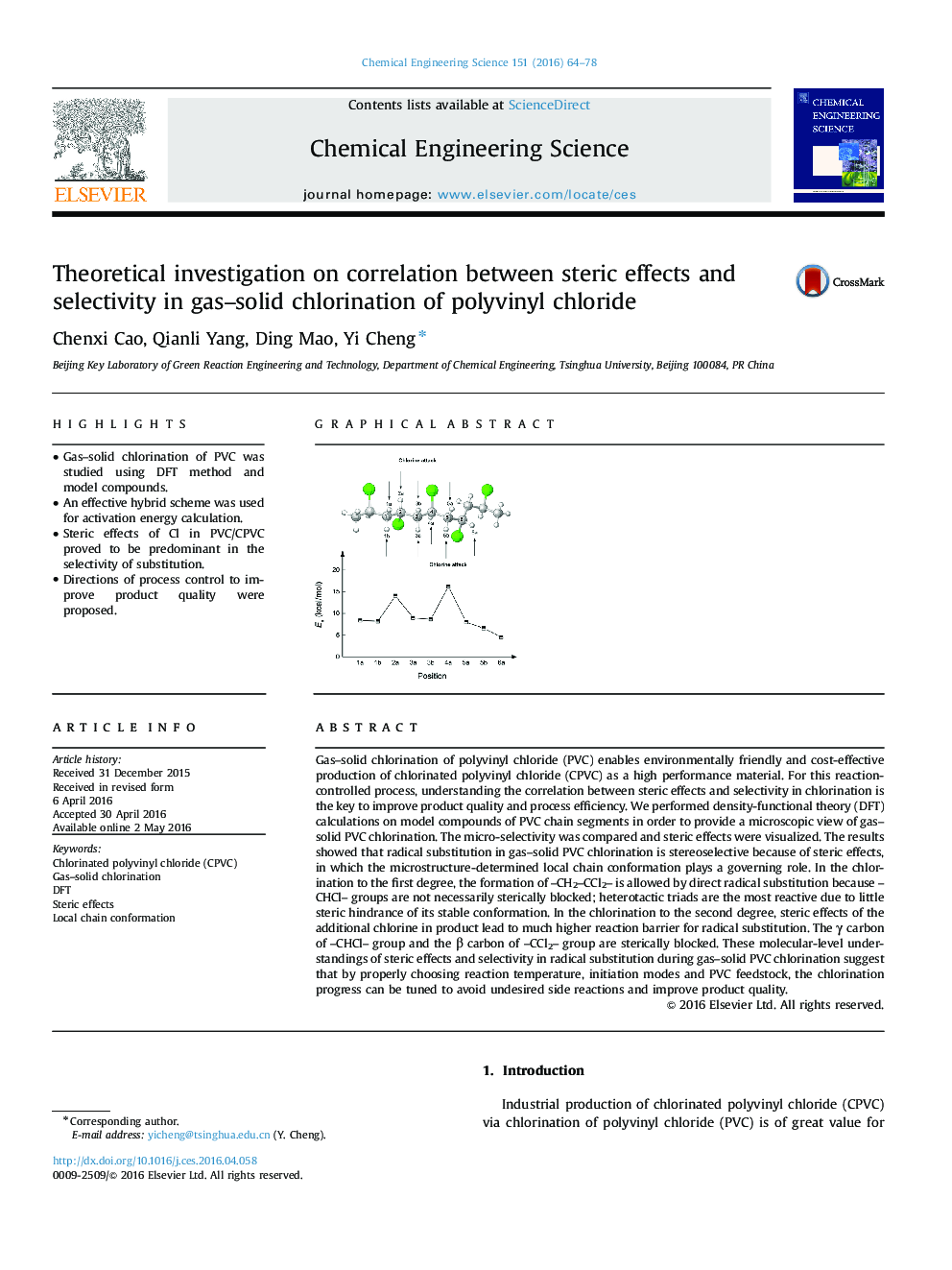| کد مقاله | کد نشریه | سال انتشار | مقاله انگلیسی | نسخه تمام متن |
|---|---|---|---|---|
| 154369 | 456833 | 2016 | 15 صفحه PDF | دانلود رایگان |

• Gas–solid chlorination of PVC was studied using DFT method and model compounds.
• An effective hybrid scheme was used for activation energy calculation.
• Steric effects of Cl in PVC/CPVC proved to be predominant in the selectivity of substitution.
• Directions of process control to improve product quality were proposed.
Gas–solid chlorination of polyvinyl chloride (PVC) enables environmentally friendly and cost-effective production of chlorinated polyvinyl chloride (CPVC) as a high performance material. For this reaction-controlled process, understanding the correlation between steric effects and selectivity in chlorination is the key to improve product quality and process efficiency. We performed density-functional theory (DFT) calculations on model compounds of PVC chain segments in order to provide a microscopic view of gas–solid PVC chlorination. The micro-selectivity was compared and steric effects were visualized. The results showed that radical substitution in gas–solid PVC chlorination is stereoselective because of steric effects, in which the microstructure-determined local chain conformation plays a governing role. In the chlorination to the first degree, the formation of –CH2–CCl2– is allowed by direct radical substitution because –CHCl– groups are not necessarily sterically blocked; heterotactic triads are the most reactive due to little steric hindrance of its stable conformation. In the chlorination to the second degree, steric effects of the additional chlorine in product lead to much higher reaction barrier for radical substitution. The γ carbon of –CHCl– group and the β carbon of –CCl2– group are sterically blocked. These molecular-level understandings of steric effects and selectivity in radical substitution during gas–solid PVC chlorination suggest that by properly choosing reaction temperature, initiation modes and PVC feedstock, the chlorination progress can be tuned to avoid undesired side reactions and improve product quality.
Figure optionsDownload high-quality image (87 K)Download as PowerPoint slide
Journal: Chemical Engineering Science - Volume 151, 12 September 2016, Pages 64–78